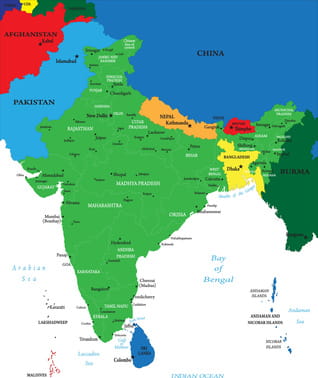Nepal–India Water Negotiations (Power Asymmetry)

Negotiations between India and Nepal on water resource projects are a good illustration of negotiation power asymmetry.
Asymmetry of Power Between Nepal and India
India is 40 times larger in land area than Nepal, and India was hungry to meet its increasing electrical power needs. Nepal is one of the poorest nations in the world. It’s also economically linked to India due to its geographic situation. However, Nepal’s water wealth is enormous. Several studies revealed that 89 sites within Nepal are potentially capable of producing 30 gigawatts (GW) of hydroelectric power to energy-starved India. This case study provides a clear example of what happens when a negotiation team hasn’t undertaken the best negotiation course to first attain internal alignment when there’s an asymmetry of power.
The multibillion capital investment required to develop these projects is well beyond Nepal’s capacity. To a lesser extent, it is beyond India’s, too. Previous negotiations on completed projects between the two countries in the mid-1960s have resulted in India retaining control over the headwaters located in Nepal. Due to this asymmetry of control, Nepal has deliberately forestalled the development of further major projects. Since then, four independent foreign studies of medium and large-term hydroelectric projects were identified. At issue was the Karnali project, which could produce a potential output of 10.8 GW.
Ineffective Negotiation Tactics
The initial feasibility studies on the Karnali project failed to take into account the impact of this product on financial feasibility and its sociological impact on Nepal. Also, during their negotiations, India denied or gave lip service to issues surrounding irrigation and flood control. This provided another issue of contention alongside the asymmetry of power. Additionally, India demanded that they would only be prepared to pay for the cost of the energy and not for the cost of peaking power. This meant a transference of most of the cost to Nepal. Nepal demanded it wanted to link the cost of electricity to the cost of alternative thermal energy. This was in a bid to enhance its profit.
Nepal politicians came under strong pressure to develop these water resources. Nepal’s stall tactics also came under the gun. In 1991, a newly elected government in Nepal proclaimed it had come to an “understanding” with India on a number of water resource issues. This understanding caused a great furor amongst the opposition parties and the general public. This resulted in a change to Nepal’s government. This turned their absolute monarchy into a combined constitutional monarchy and parliamentary democracy. The new government amended its constitution. The government passed a new order, Article 126(2). The order stated that any sharing of water resources would require an approval of a two-thirds majority in parliament.
Power Asymmetry Negotiation Consequences
On water resource projects, Nepal did hold one other major negotiation card. Specifically, Nepal had the power to veto a proposed hydroelectric water project. India was now in a weaker negotiating position. Any proposals would have to please not only the incumbent government, but also the opposition parties – or a majority segment of the population. This forced India to restructure its negotiating framework.
Negotiations were ongoing throughout the early 1990s. In February of 1996, the prime ministers signed a major treaty that addressed several sub-projects. In Nepal, parliament voted on ratifying the treaty. There was a splint in the opposition party due to a number of unresolved negotiation issues. It was not until the fall of 1996 when the opposition party was able to iron out their differences that they attained a two-thirds majority. Despite the power asymmetry, the Mahakali Treaty was ratified on September 20, 1996.
YOU MAY ALSO LIKE









